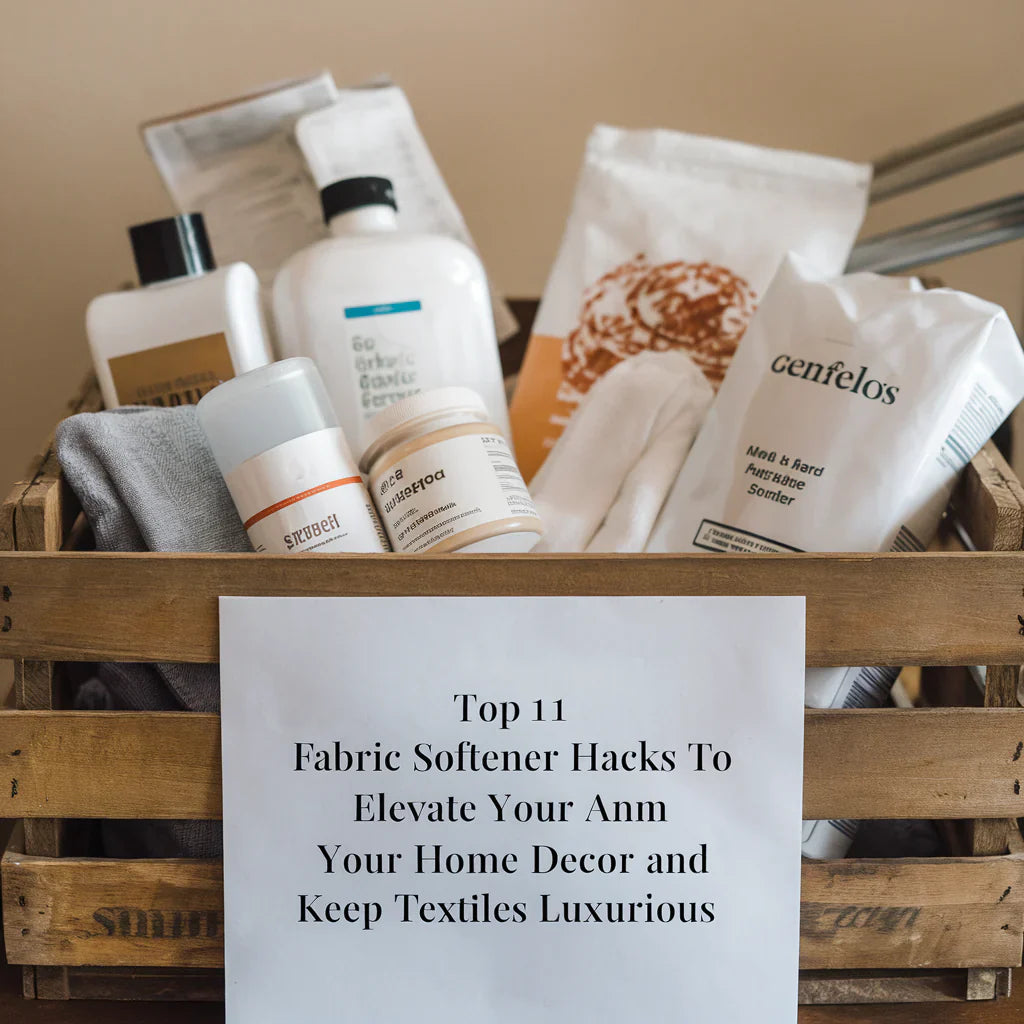Table of content
- 1. 1. Blow life back into Upholstery with Fabric Softener Sheets
- 2. 2. Toss Fabric Softener Balls into the Room to Get the Fabrics Fresh
- 3. 3. How to Refresh Your Pillows with Fabric Softener
- 4. 4. Extend Your Wear of Curtains through Fabric Softener
-
5. 5. Fabric Softener as a carpet Cleaner
- 5.1 6. Treat Fabric Softener for dusting and polishing bits and vases, silverware, decors, window blinds, mirrors, furniture, pictures, chairs, tables, cars, motorcycles, bicycles, and toys
- 5.2 7. Static – Killing It in Bedding with Fabric Softener
- 5.3 8. Kachingwe’s Solution: How to Prevent Lint Attachments on Clothes
- 5.4 9. Meditate Towels – Make your Towels Fluffy & Soft
- 5.5 10. Natural fabric softeners that are not made at home
In most minds, fabric softener hacks have a segregated image: things destined for laundry, to soften the clothes and make them smell like heaven. What they do is much beyond that. Here, at Fabrituals, we are going to share with you some lesser-known yet handy fabric softener tips, whether you are a DIY person or someone who depends on the big-gun brands like Downy, Gain, or Snuggle. Some simple tricks will help renew your upholstery, bedding, and curtain fabric, while also adding beauty to your interior decorating.
Well, let us get into 12 clever uses of the best fabric softener that can be done in and around the house!
1. Revive Upholstery by Using Fabric Softener Sheets
Dryer sheets do not stop at freshening the laundry but even revitalizing weary upholstery. All you have to do is rub a fabric softener sheet over the surface of a sofa, chairs, or cushions, so as to gently lift away dust, neutralize static, and impart a delicate lingering aroma of Snuggle or Gain.
Pro tip: Lightly mist the fabric with a DIY spray made of water and a few drops of non-toxic fabric softener, just be careful not to dampen the surface too much.
2. Sprinkle Softener Balls in the Room for Soft, Fresh Fabrics
Ensure the fabric softener beads by throwing one or two beads into the dryer together with bed linens or cushion covers. This keeps the fabric soft, reduces wrinkles, and extends its life. A Downy enthusiast just can't have enough of how it fluffs and puffs the duvet into soft, airy perfection.
3. Refresh Your Pillows
Pillows become rancid with the passage of time and dust mites. Get a tub of warm water and mix fabric softener alternatives in it; to that, add a tablespoon of baking soda and a cup of vinegar to do some soft cloth gentle wiping to your pillows. They will smell great and feel luxuriously soft. Bonus tip: Slip a Bounce dryer sheet between your pillowcases for a continuous fresh scent.

4. Make Your Curtains Live Longer
Usually, curtains become stiff with time. Then pour all fabric softener into the wash cycle or soak in diluted softener solution to get that soft, flowing texture again. Especially popular fabric softener gains freshness, which lasts longer.
5. Carpet Cleaner Shortcut
Short on time but need a quick carpet refresh? Try out diluted fabric softener. To fix those fibers and leave a lovely scent behind, simply mist your carpet lightly with this softener-and-water combination. Pro Tip: Use Downy so that the fragrance lasts longer and takes your whole room to heaven.
6. Dust and Polish Décor with Ease
It's a really effective cleaner for wood, glass, and decor using a combination of 1 part fabric softener and 4 parts water. Use it on furniture, vases, blinds, mirrors—even vehicles and toys. It produces a smooth, shiny surface and a clean scent.
7. Killing 'Static' off of Bedding
Winter static clinging to your sheets? Just add a bit of Smoothness fabric softener to your rinse cycle. It keeps bedding static-free and irresistibly soft.
8. Kachingwe’s tip: Stop Lint Before It Starts
Lint ruining your favorite clothes or blankets? Toss in a Bounce dryer sheet when washing to reduce fiber shedding and keep lint from sticking.
9. Fluffy Towels, Always
Want hotel-style fluffy towels? Add a small amount of fabric softener during the rinse cycle. They will be soft and absorbent, just refrain from overdoing it because they may lose their drying power.
10. DIY Natural Fabric Softener
Prefer chemical-free options? Mix white vinegar, baking soda, and your favorite essential oil in a mason jar for an eco-friendly, skin-safe alternative. It's great for people with sensitivities and better for the environment.
11. Before Having Leather That Fabric Softener
Leather losing its shine? Dilute fabric softener in water and wipe gently with a cloth to restore moisture and prevent cracking. Perfect for jackets, bags, or leather furniture.
Is It Safe to Apply Fabric Softener to Any Material?
In short, yes, if used correctly. While other uses for fabric softener like Gain or Snuggle typically won't harm your fabrics, overuse can lead to product buildup or reduced absorbency (especially in towels). Use sparingly and rinse well.
Voila: For delicate fabrics or everyday items, go for something natural and chemical-free to soften, to prevent damage and build-up.
Conclusion
Fabric softener is not restricted to the laundry area; such a necessary component also has ample and much more capabilities as a home décor hero. Here are 12 such simple and impactful tips that could add to the freshness, comfort, and style of every home. Whether you prefer natural mixes or trusted Downy formulas, softeners are capable of effortlessly transforming your living space.
FAQ’S
1. What does fabric softener do?
Softener minimizes static, makes the fabrics smoother against the skin, principally on underwear, and avoids wrinkling. It functions by covering the fabric fibers with a rather thin layer of chemicals on top of which the fibers are made smoother and conditioned for easier ironing for the garments and adding a nice smell.
2. Is fabric softener bad?
It is important not to confuse fabric softener with what it is not, and that is a bad product because, when used appropriately, it has disadvantages. There is evidence that it can decrease the ability of fabrics such as towels to absorb water and may cause a build-up on the garments themselves and in washing machines. Skin sensitivity may occur when some of its chemicals come in contact with the skin, and it is not environmentally friendly because it contains synthetic products. They should be used sparingly, or natural substitutes should be sought by anyone worried.
3. Is fabric conditioner the same as a fabric softener?
Fabric conditioner and fabric softener are the same thing due to the similar effect from the utilization of the fabric conditioner treatment. Both are intended for perfectly washing fabrics, deep-down cleaning, and gentle processing to prevent any formation of static charges and bring a fresh scent to clothes. Depending on the geographic location, they are synonyms.
4. What is fabric softener?
Fabric softener is a laundry product designed to make the clothes less rigid, minimize the buildup of static charges like static, and also give the clothes an appealing scent by putting a layer of conditioning agents on the fabric fibers.



